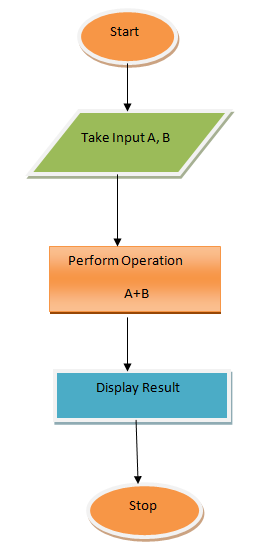For beginners in the world of programming, taking that first step to write a program can be a daunting task. The world of coding is filled with its own language and rules, which can lead to confusion and frustration. In this article, we’ll demystify the process and provide a step-by-step guide on how to write a simple program in any programming language. Whether you’re aiming to build a website, develop a mobile app, or automate a task, this guide will help you kickstart your coding journey with confidence.
Step 1: Understand the Program’s Purpose – Write a Simple Program
Before you start writing code, it’s crucial to have a clear understanding of what your program is intended to do. What problem is it solving? What is the desired outcome? Take some time to define the program’s purpose and objectives. This initial step is essential for planning and guiding your coding process.
Step 2: Find the Solution – Write a simple Program
With a clear understanding of your program’s purpose, it’s time to find the solution. Break down the problem into smaller, manageable parts. Consider the steps or operations required to achieve the desired outcome. For example, if you’re building a simple calculator program, you’ll need to perform arithmetic operations like addition, subtraction, multiplication, and division. This decomposition of the problem into smaller tasks will serve as the foundation for your program.
Step 3: Algorithm Development – Write a simple program
Now that you have a clear plan in mind, it’s time to create an algorithm. An algorithm is a step-by-step set of instructions that outline how your program will solve the problem. Think of it as a recipe for your code. For our calculator example, here’s a simple algorithm:
- Start
- Take input for two numbers.
- Perform the desired arithmetic operation (e.g., addition).
- Display the result.
- Stop
This algorithm provides a high-level overview of the program’s logic. It’s essential to define the input, the operations to be performed, and the output.

Step 4: Choose Your Programming Language – Write a Simple Program
With the algorithm in hand, you can now choose the programming language you’d like to use. There are numerous programming languages available, each with its strengths and purposes. If you’re new to programming, consider starting with beginner-friendly languages like Python or JavaScript. These languages offer clear syntax and extensive documentation, making them ideal for newcomers.
Step 5: Writing the Code – Write a simple Program
Now comes the exciting part—writing the actual code. Using your chosen programming language, translate the algorithm into code. In our calculator example, here’s a Python snippet for adding two numbers:
Take input for two numbers
num1 = float(input(“Enter the first number: “))
num2 = float(input(“Enter the second number: “))
Perform addition
result = num1 + num2
Display the result
print(“The result of addition is:”, result)
This code snippet reflects the algorithm’s steps, from input to addition to displaying the result. As you write the code, pay close attention to syntax and formatting, as these details are critical in most programming languages.
Step 6: Testing and Debugging – Write a Simple Program
Once you’ve written the code, it’s essential to test it thoroughly. Test your program with various inputs to ensure it behaves as expected. Debugging is a natural part of the coding process, so don’t be discouraged if you encounter errors. Use debugging tools and techniques provided by your programming environment to identify and fix issues.
Step 7: Run Your Program – Write a Simple Program
After successful testing and debugging, it’s time to run your program. Execute the code and observe the output. Verify that the program produces the desired results. Congratulations, you’ve written your first program!
Step 8: Learn and Iterate – Write a Simple Program
Writing a simple program is just the beginning of your coding journey. Continuously learn and explore new concepts in programming. Challenge yourself with more complex projects as your skills grow. The key to becoming a proficient programmer is practice, patience, and a passion for learning.
In Conclusion
Writing a simple program doesn’t have to be intimidating, even for beginners. By breaking down the process into clear steps, understanding the problem, and following a structured approach, you can create your first program successfully. Remember that coding is a skill that improves with practice, so keep coding, exploring, and expanding your knowledge. Your coding journey has just begun, and there’s a world of possibilities waiting for you to explore.
Other Articles on Programing Language in this website.
What is an algorithm and What is flowchart.
 IT2EDU Empowering Education Through Technology
IT2EDU Empowering Education Through Technology
